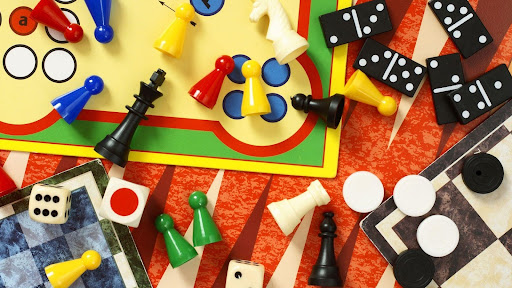Why Are Board Games So Expensive? Key Factors That Influence Pricing

Board games have long been a cherished pastime, offering entertainment and a way to connect with friends and family. But as any board game enthusiast will tell you, the price of these games can sometimes be surprisingly high. From classic titles to modern strategy games, many board games come with a significant cost that might leave consumers wondering: Why are they so expensive?
To help shed light on this, platforms like The Board Game Collection—a hub for board game enthusiasts providing reviews, pricing details, and in-depth information on a variety of games—can offer some insight. Whether you’re browsing their catalog or looking for detailed game specs, understanding what drives the price of board games requires exploring various factors such as production, design, distribution, and the niche market they serve. Let’s break down these key elements to understand why your favorite games might cost more than you expect.
1. Production Costs
Board games are more complex to produce than they appear. Unlike mass-produced items, many board games have small print runs, which means production costs are spread across fewer units, increasing the price per game. Several elements make up the cost:
Component Quality: Many modern board games come with high-quality pieces like custom dice, miniatures, and detailed boards. These are often made of specialized materials, which require specific molds and processes. Printing costs, especially for intricate designs and high-quality artwork, also add to the expense.
Manufacturing: Board game production is often outsourced to specialized factories, many of which are located overseas. International shipping, import taxes, and fluctuating material costs (like cardboard and plastic) can drive up prices significantly.
2. Artwork and Design
A key aspect of a great board game is its visual appeal, and quality artwork doesn’t come cheap. Board games often require extensive custom art for the board, cards, and box, and hiring professional illustrators can be costly. Similarly, game design and development take time and expertise. Designers spend months or even years developing a game, balancing mechanics, testing gameplay, and refining the experience.
3. Licensing and Intellectual Property
Some of the most popular board games are based on established franchises (like Star Wars or Harry Potter), which means game developers have to pay for licensing rights. These fees can be quite high, and the cost is often passed on to consumers. Even games that aren’t based on well-known intellectual property may have licensing fees for certain elements, such as specific artwork or mechanics.
4. Limited Print Runs and Niche Markets
Unlike mainstream toys or video games, most board games don’t have the luxury of massive production runs. Board games often cater to niche audiences, meaning fewer copies are produced. Smaller print runs increase the cost per unit because fixed production costs (such as tooling, printing plates, and packaging) have to be spread over fewer games. Limited-edition games or Kickstarter projects can also have higher prices due to their exclusivity and lower production volume.
5. Distribution and Retail Markup
Once a game is produced, it must be distributed, which adds another layer of cost. Distributors, warehouses, and retailers each take their cut. While some publishers sell directly to consumers, most games go through retail channels, and the markup can be significant. For example, if a game is sold for $60, the publisher might only see a fraction of that after the retailer and distributor take their portion.
6. Crowdfunding and Pre-orders
In recent years, platforms like Kickstarter have revolutionized the board game industry. However, this model often leads to higher prices. Many Kickstarter projects offer deluxe editions, stretch goals, and exclusives, which, while adding value, also increase costs. Backers often pay for these extras upfront, but the production of these limited-edition items can drive up the overall cost of the game.
7. Research and Development
Designing a game isn’t just about artwork and rules. It involves extensive playtesting and refinement to ensure that the game is balanced, engaging, and replayable. This takes time and resources, often over months or years. The cost of hiring game testers, designers, and developers all contribute to the final price.
8. Shipping and Handling
Board games are often large, heavy, and oddly shaped, which makes shipping more expensive than you might expect. International shipping, especially in the wake of recent global shipping crises, has become a significant factor. Even for domestic shipping, the cost of getting games from the manufacturer to warehouses and then to retailers can be high, especially for bulkier games.
9. Market Demand and Perceived Value
Board games are increasingly seen as premium products, especially with the rise of the “hobby board game” market. Games that offer intricate strategies, beautiful components, and immersive experiences often position themselves as luxury items, which can justify a higher price. Players often value replayability, uniqueness, and depth of gameplay, which raises the perceived value—and cost—of the game. Positive game reviews also drive demand, reinforcing the sense that these games are worth their higher prices.
Conclusion: A Mix of Factors
While it might be frustrating to see high prices for board games, it’s essential to recognize that many factors contribute to the final cost. From production and material quality to artwork, licensing, and distribution, each piece of the puzzle plays a role. Ultimately, purchasing a board game isn’t just buying a box of components—it’s an investment in the creativity, design, and countless hours of development that go into making a great game.
So next time you’re eyeing a new game on the shelf, remember that the price tag reflects not just the materials but the labor, craftsmanship, and passion behind it.


